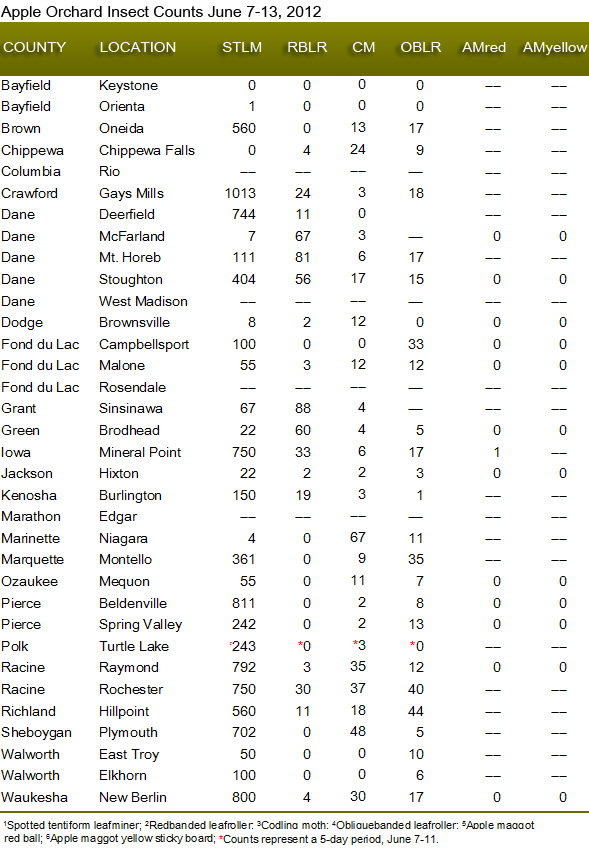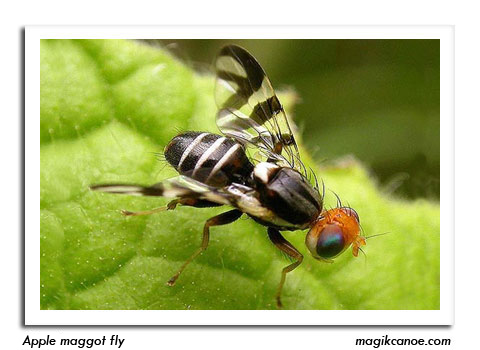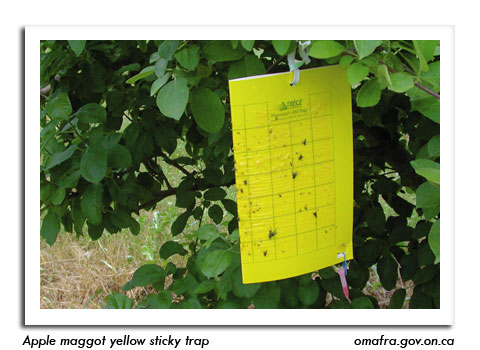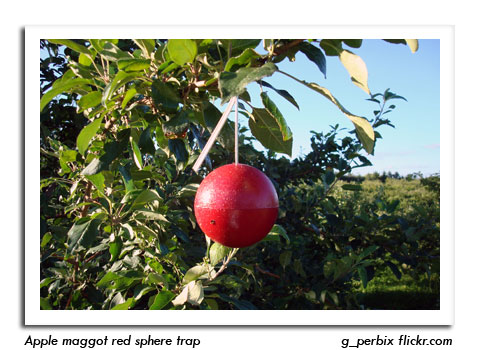
 |
|
|
Fruits
Volume 57 Number 10 Date 06/14/2012 APPLE MAGGOT - The first fly appeared on a yellow sticky trap at the apple orchard near Mineral Point in Iowa County from June 7-13, approximately three weeks earlier than last year. Regular checks of red sphere and yellow sticky traps are recommended at this time. The first maggot spray should be applied 7-10 days after the first fly has emerged, with later sprays following at 10-14 day intervals as long as flies are being captured on traps. The apple maggot adult is distinguished from similar fruit flies by an F-shaped wing banding pattern and a pronounced white spot on the thorax. CODLING MOTH - Several southern and eastern Wisconsin apple orchards reported large flights of 17-48 moths during the last reporting period. These high counts represent the second peak flight of first brood moths, also referred to as the "B" peak. Sprays applied last month at the standard 250 degree-day (base 50°F) post-biofix threshold will not provide sufficient residual insecticide to control the later hatching larvae resulting from the ?B? peak moths, so another spray may be necessary to prevent larval penetration of the fruit later this month and in July. SPOTTED TENTIFORM LEAFMINER - The second flight of moths continued this week, with pheromone trap counts ranging from 5-1,013 per trap. The peak in flight activity should occur by June 20 throughout most of southern and central Wisconsin and a week or more later in the southeast, east-central and northern areas. Apple orchards with populations greater than 1.0 mine per leaf or a history of infestation are candidates for control of second generation leafminer larvae. REDBANDED LEAFROLLER - The orchards in Crawford, Dane, Grant, Iowa, Kenosha and Racine counties registered captures of 19-88 moths during the last reporting period, indicating the start of the second flight of moths. Counts of this pest have been unusually low since mid-May, while counts of the obliquebanded leafroller have remained consistently high at several sites for the last four weeks. --Krista Hamilton, DATCP Entomologist 



|
|
|